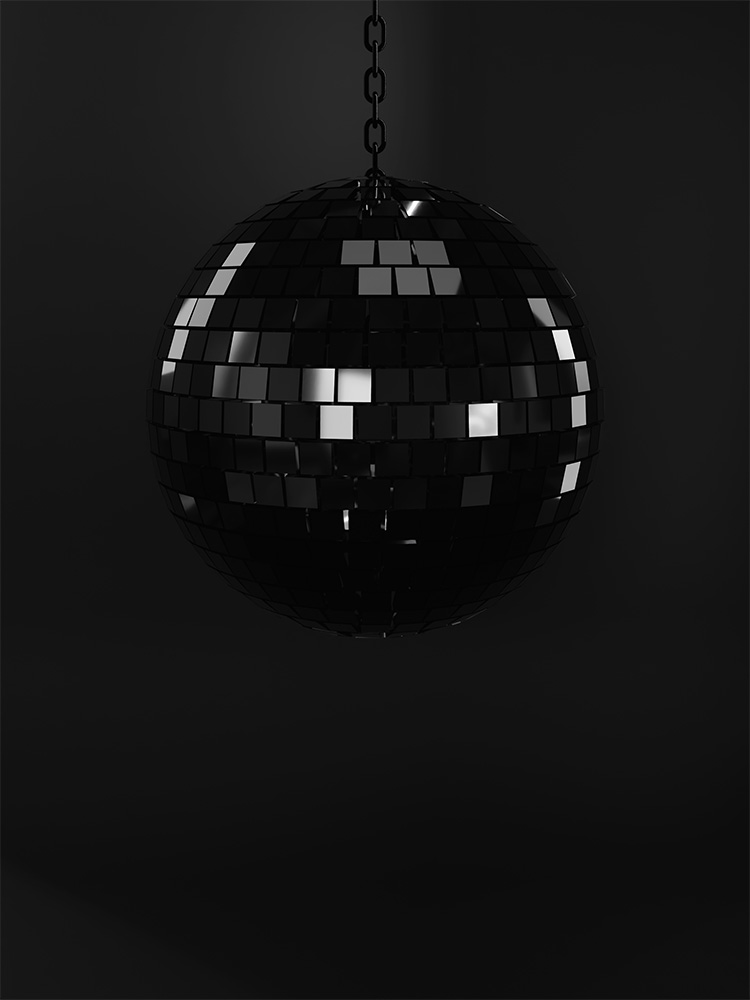Dazzling darkness.
Text: Barbara Spycher
Whether we’re sleeping, partying or getting up to mischief, night defies the rules of day and creates space for the unexpected.
Michel Massmünster has had many all-nighters – for academic purposes, of course. A cultural scientist, he has accompanied people through the night, attended parties and concerts, immersed himself in the streets and scenery and analyzed both contemporary and historic writings – all of which he has incorporated into his doctoral dissertation at the University of Basel.
He is fascinated by the mysteries and ambiguities of this interval between sunset and sunrise: “The night provides space for ecstasy or contemplation; it can trigger fascination, but also fear.” The same can be said today as back then.
The nature of night was accentuated by the tearing down of town and city walls in Switzerland in the mid-19th century. “The night revealed its hidden face,” says Massmünster. Up until that point, the gate to a town or city would be closed at night and people had to remain at home.
At night, city life turned inward, but this changed with industrialization: To create more space, city and town walls were torn down, allowing access at all times. In addition, more people had to go out in the darkness to get to factories and markets.
Fascination for night-time hotspots.
The night-time city became busier and brighter, partly due to the introduction of gas-powered and later electric lighting. Things that had previously played out in secrecy – sex work, smuggling and other illegal or taboo activities – suddenly became visible.
The upper class were disgusted but also fascinated. In large cities like Berlin and Paris, guided tours were even organized of these nocturnal social hot spots.
On the whole, however, the bourgeoisie saw the night as a problem because it was outside their control. There was great anxiety that the workers would plan the next revolt against their exploitative employers if they spent their nights drinking and singing together in taverns.
Space to break out.
The revolutionary nature of night has largely dissipated in today’s post-industrial cities and towns. However, Massmünster says that the various facets of the night have remained – and new ones added, such as diverse commercial options for whiling away the night.
Budget airlines allow young people from across Europe to fly to Berlin (for example) and spend a weekend partying in its countless clubs. Such activities always carry an “expectation of the unexpected”, as Massmünster calls it. This is in total opposition to the daytime. In the daylight, our lives have a much more rigid schedule; we move with greater purpose, to go shopping or to work. At night, many people are open to whatever may happen.
Massmünster has observed that more, and more spontaneous, things happen due to this collective openness. You might suddenly find yourself sitting around a crackling campfire, singing and making music with strangers. You might experience the ecstasy of dancing, of meeting someone new, of sexual adventure. Clubs are the natural setting for such encounters, reinforced by the way they play with lights and music.
On the other hand, the night also provides a space for repose, retreat and reflection. Night-time provides one of the increasingly rare moments today in which we can switch off and ignore our phones and emails – provided we aren’t working a night shift. And provided we don’t turn night into day with the new communication technologies that allow us to connect with the whole world online around the clock.
New order.
Yet, if we seize the opportunity, the night becomes a refuge in which we are reflected back on ourselves, more exposed and vulnerable. We can feel secure under the starry sky, one of the many people who will soon be asleep – or who are also lying awake. Thoughts we ignored in the daytime like to creep into this refuge. In the dark they grow into mountainous problems and rob us of our sleep.
“The night acts as a corrective to the day, reminding us of the things we overlooked,” says Massmünster. “Night’s significance as an antithesis, be it as a time to break out or to retreat, stabilizes the order of the day.” This can also be seen in history: When everyday life became more temporally structured in the 19th century, the night evolved into a space for unrest and danger.
Even now, we consider daytime to be the norm and the night to be “the other”. Massmünster sees this both in night schedules for public transport and in academic discourse and methodology.
For example, the socio-scientific method of participatory observation assumes that a researcher is watching as an event unfolds. “That doesn’t work in a darkened club.” Again and again, the night defies the rules considered self-evident in the daytime. And whether we choose to live or sleep through it, the night will come around again, asking us what we will make of it.
More articles in this issue of UNI NOVA (November 2024).

